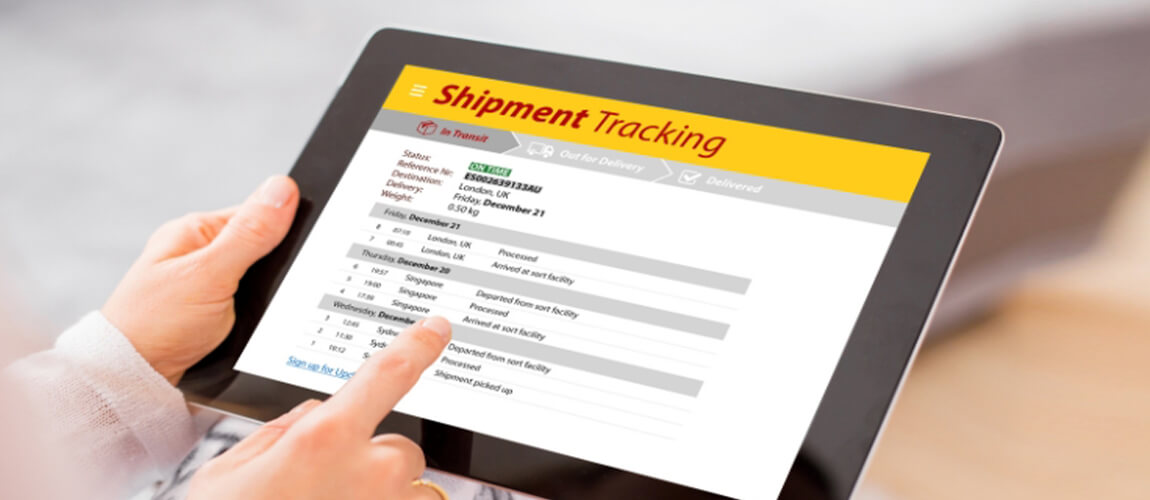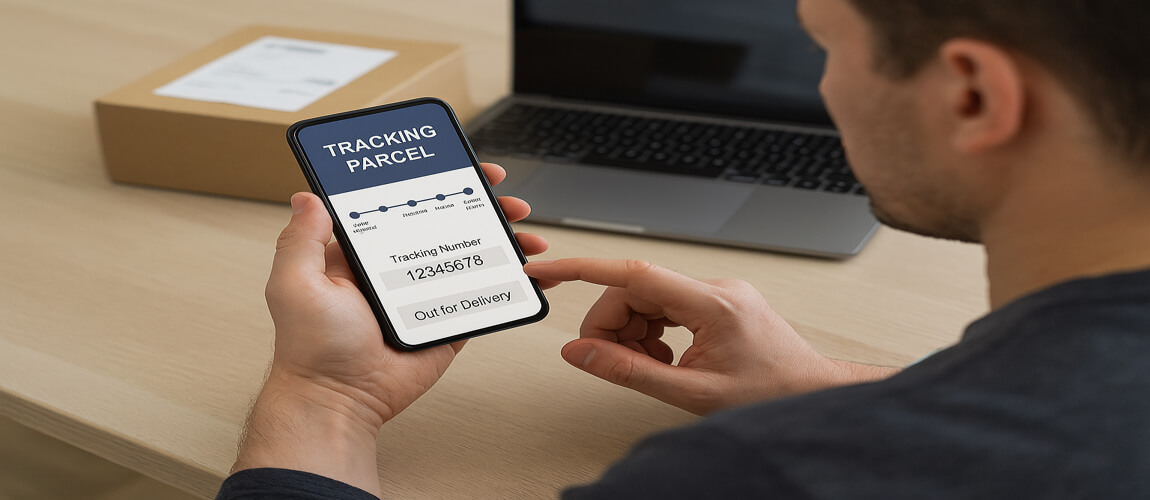
As we observe the various elements and complexities of the business industry in today’s fast-paced global market, with a massive increase in online purchases and a growing demand for accurate and consistent delivery systems, we can see the significance of effective cargo tracking in online purchases, whether domestic or international delivery tracking.
This is especially true given the rising concerns about cargo theft, which requires businesses to take an active approach to tracking their order to prevent financial losses, maintain brand reputation, and reassure customers about cargo security.
What is Cargo Tracking?
Cargo monitoring is a procedure that makes good use of technical tracking to allow businesses to watch the movement of their commodities in real-time, from the moment they leave the warehouse until their final destination. Most cargo articles have labels as well as barcodes, which can be scanned at various stages during the voyage.
Data Transmission: The tracking devices then transfer this data to a central system, allowing businesses to trace the movement of their cargo from anywhere in the world and make it available through a website or mobile application.
In today’s highly competitive and limitless business landscape, particularly in the digital sphere of online purchasing, cargo tracking has become an essential component of supply chain management. With e-commerce’s growing dominance and the fact that approximately 90% of global trade is carried out by international shipment, businesses must use the necessary tools to improve fulfillment, adapt to more efficient logistic solutions, and maintain full visibility over their shipments to remain competitive and meet customer expectations.
What is Track and Trace?
Track and trace are two critical components of the supply chain that enable various logistics providers and businesses to determine where and when to dispose of products.
Tracking refers to the procedure of following the trail left by international shipping tracking. Trace, on the other hand, entails monitoring the movement of the package as well as its temperature. Simply put, track and trace is a method of recording the movement of goods.
Why Tracking Matters for International Cargo

Track and trace aims to increase supply chain transparency international delivery tracking by informing logistics providers, partners, and customers about the shipping status and specific location of items. Furthermore, it increases logistics network management as well as customer service quality.
Builds Confidence and Trust
The most fundamental rule of business is to foster trust among your partners and customers. The same is true in the logistics industry for track your order. You must build confidence by fostering transparency throughout your supply chain by tracking and tracing.
Tracking and tracing in logistics provides peace of mind while also informing your partners and customers about the status of their shipments. Additionally, it fosters confidence between the provider and the buyer.
Ensures Timely Delivery
Inefficient deliveries cause a lack of transparency in the supply chain as track your order. Logistics managers have a difficult time determining the location and status of carried shipments and items. As a result, they are denied real-time information about the products, such as:
- Estimated delivery time
- Temperature of products maintained?
- Are the goods delivered to the consumer in good condition?
- Has this package been received successfully?
- Are there any missed cargo tracking?
- Is the cargo tracking delayed?
Prevents Loss and Theft
Managers can maintain track of shipments at all times thanks to track and trace in logistics, which provides them with real-time information. They can detect when a track international package is missing, damaged, or delayed. As a result, they can address all issues ahead of time, guaranteeing that the supply chain remains uninterrupted.
Provides Proof of Delivery
Did a supplier fail to pick up your container, or is it blocked in customs? Perhaps it has cleared and you now need to schedule the drayage before fees accrue. These are just a handful of the worrisome moments that you may encounter while tracking your shipment. With so many points, you can’t afford data loss or delays.
Customers can also select to get alerts about delays and missed delivery, giving them the ability to keep informed. Complete visibility also makes it easier to track all shipments, avoiding losses and guessing.
Assists in Claims and Disputes
One of the most obvious but still important advantages of being able to use a tracking number is that it helps minimize consumer worry about when an item will arrive. Customers frequently express concern regarding their international shipping tracking, especially if it is significant or beneficial, or if they need it by a specific date.
What a Good Tracking System Should Include
Provide delivery information
Tracking numbers and management systems can not only notify consumers that their items are on their way, but also provide further information about the entire process from pickup to delivery. Customers can use them to acquire estimated deliveries, check if delivery dates have altered, and track shipping charges by site. Following delivery, an update will be sent indicating where the package will arrive.
Package tracking enables carriers and shippers to provide transparency to customers. It kicks off the party and clarifies the procedure. Customers, particularly today, trust organizations that are transparent to them and are quick to dismiss those they consider to be deceitful. You can assist develop and maintaining trust with your customers by providing them with all essential information and the option to trace their transactions.
Reduce customer service expenses and needs
By providing your customers with an electronic option to shipment tracking , your customer service department will save time answering most tracking-related concerns. This allows them to concentrate on actual client concerns rather than wasting time updating impatient customers on the status of their orders.
If you own a business, manage a fleet, or oversee machinery, you may want to consider investing in a GPS tracking system to monitor parcel tracking. However, where exactly do you start when it comes to choosing the best GPS tracking system for your business? What should you look for in a GPS?
With physical and technical security becoming more important than ever, it is critical to select a solution that not only works effectively but is tailored to your specific business and needs for courier tracking.
Here’s what to consider while selecting and evaluating shipment tracking.
Real-time versus periodic tracking
What exactly are your tracking requirements? Assets, such as vehicles or employees, may need to be tracked 24 hours a day, seven days a week in order to report on distance, speed, or route history. Other assets that remained stationary for extended periods of time, such as generators or trailers, may benefit from a long-lasting, battery-powered tracker that only delivers location for courier tracking updates at regular intervals, such as every 12 hours.
Tracking features
Consider the features that will benefit your organization, such as surveillance and alerts for international delivery tracking
Reports on driver behavior, including cornering, speed, and idle times.
• Travel history, including routes, timings, and speeds.
• Displays voltage and battery power levels.
This will help determine whether any specific system or type of tracking device is the best option.
Hardware compatibility and installation
Some tracking devices, cameras, and sensors must be installed in specific areas on or within the asset, and by experienced installers. Others are quick and straightforward to install, requiring only basic equipment. If you need to install a large number of trackers or other devices, you should consider a timeframe and how many vehicles or assets you can take ‘down’ at once.
Battery life and power supply
Similarly, while many assets may have a power supply readily available (e.g., connecting to the asset’s battery or wire loom), others may be better suited for tracking devices powered solely by their own battery/batteries for track my parcel. Many battery-powered devices allow for sporadic tracking, such as twice a day while stationary, to extend battery life.
Software Interface and Accessibility
Whether you have one asset being tracked or hundreds for parcel tracking, it’s critical that the program you use to access, examine, and control the tracking devices is simple to use and accessible via PC, laptop, tablet, or mobile, ensuring that no data is lost.
Flexibility and Future Needs
As the amount of your business or personal assets changes, so should the number of tracking devices for international shipping tracking. Therefore, you may need to consider: Will the supplier you chose be able to provide you with the necessary number of tracking devices? What are the procedures for uninstalling or pausing devices? Is there a limit to the number of devices that can be associated with your tracking dashboard?
Data Safety and Privacy Compliance
The position and condition of your courier tracking, as well as the details of anyone with access to your dashboard, are sensitive information, thus it is crucial that the monitoring system you choose meets local data privacy rules and safeguards sensitive information. For example, are all logins password-protected? Is the information adequately encrypted? Is the data safely backed up?
Customer Support
While many companies boast about their products and make lofty promises, their customer service and continuous support for track international package may leave much to be desired. Ensure that your chosen tracking partner delivers not only excellent goods but also excellent service.
Final Thoughts
As a result, by implementing cargo tracking solutions, businesses may improve customer satisfaction while also streamlining operations by delivering visible, accurate, and real-time information to minimize loss or theft during the shipping process.
Prioritizing cargo tracking services allows businesses to track their parcel to better manage their operations, increase consumer trust, and remain ahead of the competition.

 07424380227
07424380227